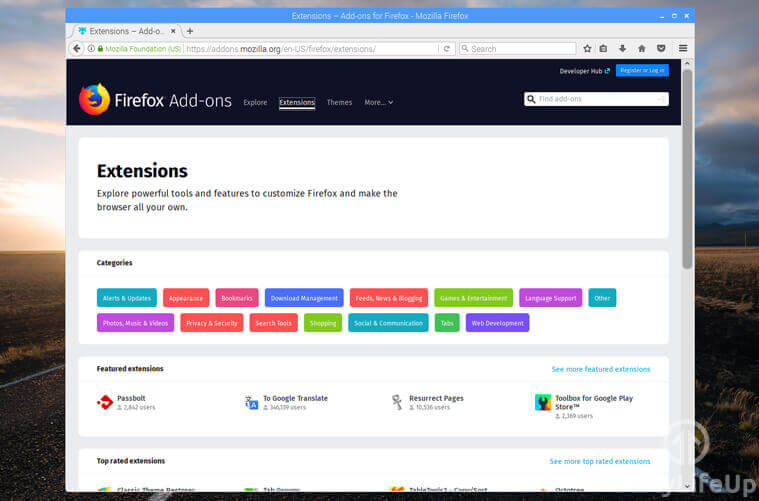

I thought Julia was the slowest language for importing libraries, but the amount of time it took to install Smashing changed my mind. It did take me a long time though to install Smashing which I thought was odd. Follow the instructions here to install and run SmashingĪnd that’s it! I found it to be the easiest dashboard to setup and use out of any of the dashboards I’ve compared on this list.
#RASPBERRY PI FIREFOX BROWSER UPDATE#
Install Ruby by opening a terminal and typing: sudo apt update & sudo apt install ruby-full.To setup a Smashing dashboard on Raspberry Pi: It was easy to install, and looks great out-of-the-box. I feel Smashing is the best dashboard tool on this list. It’s a bit power hungry so consider a smaller display like this if you’re concerned about how much power it uses.

Interested in the screen I’m using to display these dashboards? I use a portable 15.6″ HD monitor like this one (cost me around $160 when I bought it – and note you must use HDMI as the USB-C won’t work with Rasbperry Pi) to display my Raspberry Pi. Ruby and Smashing running on my Raspberry Pi (using the web browser to view)

Displaying data on another device (e.g.Quickly building an attractive looking dashboard.Publicly displaying data on a big screen connected to the Raspberry Pi.Using Ruby to build a dashboard on a Raspberry Pi is great for: The Raspberry Pi’s own web browser can also connect to the dashboard app (this is what I did to get the photo below). It can be used to build a dashboard on the Raspberry Pi using its Smashing dashboard library (Ruby libraries are also called gems).Ī web browser can connect to the Ruby app running on the Raspberry Pi to display the data. Ruby is an easy to use programming language that runs on Raspberry Pi. If you need help collecting some data first, check out my guide here: /collect-data-with-raspberry-pi/ Ruby and Smashing dashboard The tools here will help you build a dashboard server that you can then visit from a browser running on your Raspberry Pi or from another device on the same network. Nearly all of the example dashboards in this guide use a web browser (Chromium, Firefox etc.) to actually view the dashboard. Raspberry Pi powers all these dashboards (tested using my R Pi 4)


 0 kommentar(er)
0 kommentar(er)
